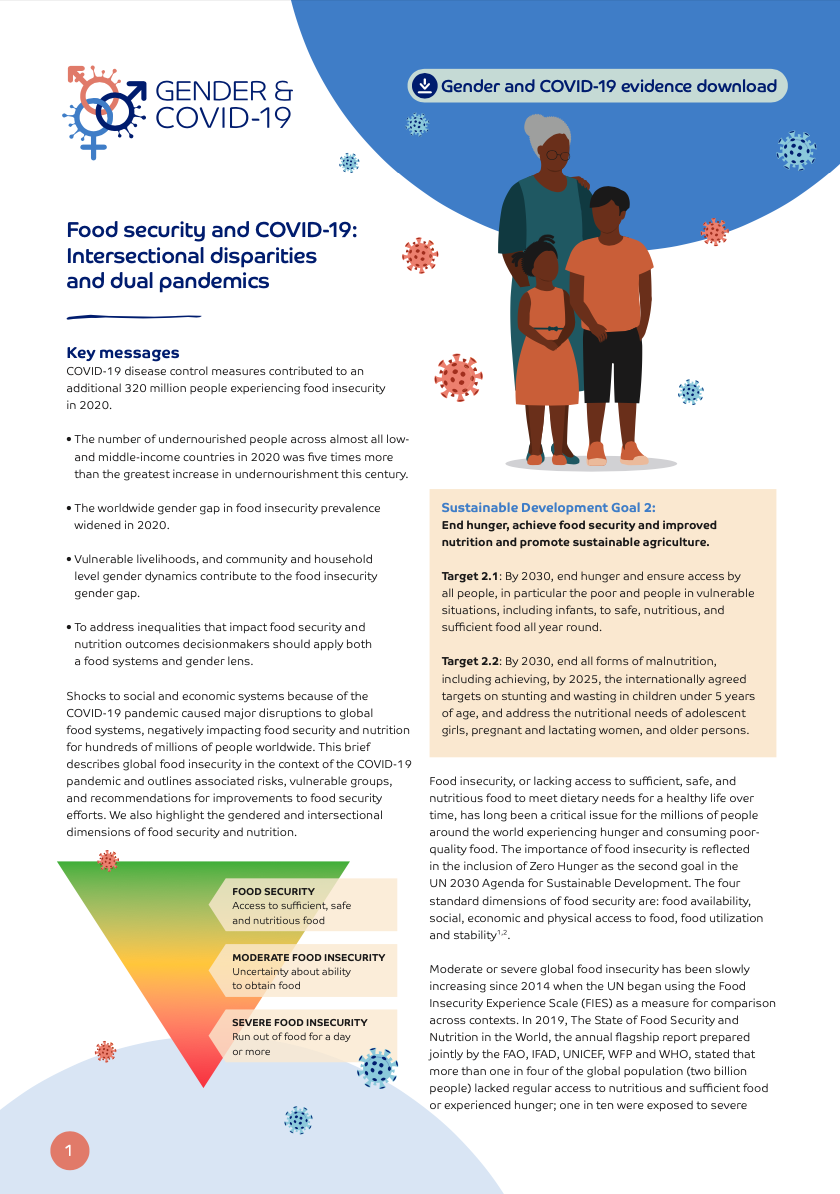Key messages
COVID-19 disease control measures contributed to an additional 320 million people experiencing food insecurity in 2020.
- The number of undernourished people across almost all low- and middle-income countries in 2020 was five times more than the greatest increase in undernourishment this century.
- The worldwide gender gap in food insecurity prevalence widened in 2020.
- Vulnerable livelihoods, and community and household level gender dynamics contribute to the food insecurity gender gap.
- To address inequalities that impact food security and nutrition outcomes decisionmakers should apply both a food systems and gender lens.
Shocks to social and economic systems because of the COVID-19 pandemic caused major disruptions to global food systems, negatively impacting food security and nutrition for hundreds of millions of people worldwide. This brief describes global food insecurity in the context of the COVID-19 pandemic and outlines associated risks, vulnerable groups, and recommendations for improvements to food security efforts. We also highlight the gendered and intersectional dimensions of food security and nutrition.
Food security and Covid-19: Intersectional disparities and dual pandemics






